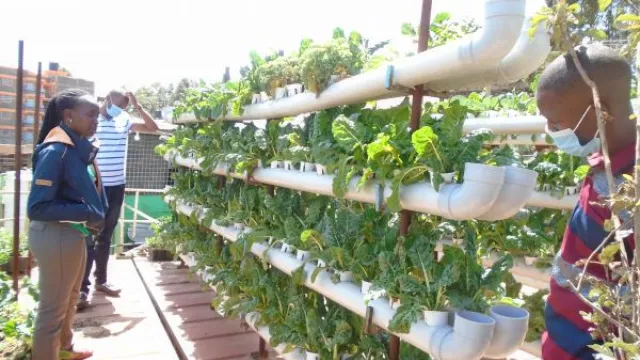Farming in counties embraces climate-resilient practices

Farming in counties embraces climate-resilient practices
As climate change continues to wreak havoc on global ecosystems, Kenya finds itself grappling with the far-reaching consequences, particularly in the realm of agriculture.
The country has been on the front lines, contending with climate-related challenges that have disrupted its food supply chain. Erratic rainfall patterns, prolonged droughts, and unpredictable weather have all conspired to threaten Kenya's agricultural sector, leading to shortages of essential crops like maize and onions.
In response to these adversities, an innovative approach known as hydrophonic agriculture is gaining traction as a promising solution to cope with climate change. This revolutionary method involves treating soils to enhance water retention, combat soil erosion, and boost crop production.
Hydrophonic agriculture seeks to optimize available water resources, improve soil fertility, and increase crop yields in areas with water-repellent soils. The approach emphasizes sustainable practices that minimize water wastage and soil erosion while maximizing agricultural productivity.
Read Also: Explainer: Why We Need Trees
Hydrophonic agriculture
One remarkable example of hydrophonic agriculture in action can be found in Machakos County, an area that receives limited rainfall. Here, farmers have implemented wicking bed systems, which consist of raised containers with water reservoirs beneath them.
This design ensures a consistent supply of moisture to plant roots, enabling farmers to grow fruit trees and vegetables even during dry spells.
In the Rift Valley, some farmers have turned to soil conditioners and organic matter to combat soil degradation. By incorporating hydrophilic substances like biochar and composted manure into their soils, they improve soil structure and enhance water retention.
Meru County has witnessed a surge in agroforestry practices that combine tree planting with crop farming. This approach not only enhances resilience to changing rainfall patterns but also boosts soil fertility and provides farmers with alternative sources of income.
Similarly, tea farmers in Nandi County have embraced conservation tillage methods like no-till or reduced-till farming, which reduce soil disturbance, improve water filtration, and mitigate soil erosion.
Kenya is also exploring other sustainable agricultural products, such as palm oil, derived from the fruit of palm oil trees primarily cultivated in tropical regions. Indonesia, one of the world's largest palm oil producers, has offered to assist Kenya in scaling up palm oil production. This collaboration aims to benefit selected counties, including Lamu, Kwale, Tana River, Taita Taveta, Homa Bay, Migori, Kisumu, and Busia.
However, the palm oil industry, while lucrative, has raised social and environmental concerns in other regions, particularly in Indonesia. The rapid expansion of palm oil plantations has led to large-scale deforestation, posing a significant threat to biodiversity and carbon sequestration.
Indigenous and local communities have faced displacement as their ancestral lands are converted into monoculture plantations, disrupting traditional livelihoods and cultural ties.
Efforts to promote sustainable palm oil production practices, such as certification programs like the Roundtable on Sustainable Palm Oil, have gained traction in recent years as awareness of these issues has grown.
Innovative approaches like hydrophonic agriculture are emerging as essential solutions in the battle against climate change's profound impact on food systems. These methods offer increased resilience for agriculture while charting a sustainable path forward in the face of climate uncertainty.
As Kenya pioneers these approaches, it sets an example for the world in adapting to a changing climate while ensuring food security and environmental stewardship.



